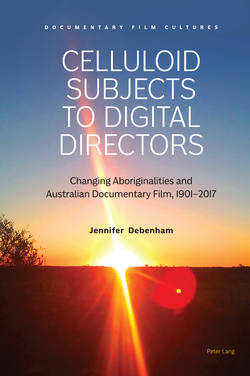Читать книгу Celluloid Subjects to Digital Directors - Jennifer Debenham - Страница 28
На сайте Литреса книга снята с продажи.
Blood Grouping and the Absorption Policy
ОглавлениеThe confluence of eugenics, new research in genetics and hereditary, as well as the debates about racial hierarchy, provided the context in which Cleland could conceive that blood groups might provide a useful and objective indicator of racial affiliation. By 1931, Cleland and Professor Harvey Johnston had developed a hypothesis that blood groups could be used as racial markers. The hypothesis was based on the work of a Polish husband and wife team Ludwick and Hanka Hirschfeld who developed the Biochemical Race Index (BRI) during the First World War. The Index linked blood types to geographical locations across the globe, concluding: “the prevalence of the group A is a characteristic of the European peoples … and that blood group B had originated in India”.7 It implied a polygenic origin for humans, challenging the more widely accepted monogenic theory proposed by Charles Darwin.8 The Hirschfelds advocated for an internationalised study of blood groups claiming it “would be necessary to have close co-operation between anthropologists and the blood groupers”.9 The importance of this Index to the work of the SABAR group meant the origin of Aboriginal Australians could be determined through blood grouping.
Cleland had been collecting blood group data since 1922 and the conclusions he drew from his work simultaneously reinforced the findings of two other Australian doctors, A. H. Tebbutt and Sarah McConnel; that Aboriginal people were an early offshoot of Caucasians. He believed that the long isolation and separation of Aboriginal people from other groups ←37 | 38→explained the high numbers in group A and an absence of group B which he believed pointed to a lack of Indian or Asian presence.10 The allure of this hypothesis fitted with the belief that science could provide an objective stage where theories of racial hierarchy could be played out. Cleland believed that the resulting data collected would provide a means to racially identify people.
His results indicated a close relationship between Aboriginal people and Caucasian Australians stimulating heated debate not only within the scientific community but also within the wider community. Controversially, Cleland believed it was feasible that Aboriginal peoples could be biologically absorbed into the mainstream white population without causing any undue genetic detriment. Cleland became the foremost advocate for the biological absorption of Aboriginal people.11 It was believed this attempt to phenotypically12 “disappear” Aboriginal people was the answer to what was commonly referred to as the “Aboriginal problem”.
Two Aboriginal Protectors, Cecil Cook in the Northern Territory (1927–1939) and A. O. Neville in Western Australia (1915–1940) were also enthusiastic supporters of an absorption policy. They saw it as a remedy to the inconvenience of having to make special considerations for a minority population group. Others saw it as an opportunity to ensure a unified society. Contrary to what Cleland and his colleagues had in mind, Cook and Neville sought a more structured and methodical approach to how the policy was managed. Sadly, in the hands of these two men it led to the forced separation of families, The Stolen Generations, and today most Aboriginal families still suffer from the familial and cultural dysfunction caused by their interpretation and management of the policy. Although Life in Central Australia makes no specific references to eugenics or policies regarding absorption, the film is ideologically framed by these contemporary ideas. It demonstrates the processes of collecting the biometric data used to support the range of hypotheses proposed by the research group.
←38 | 39→
